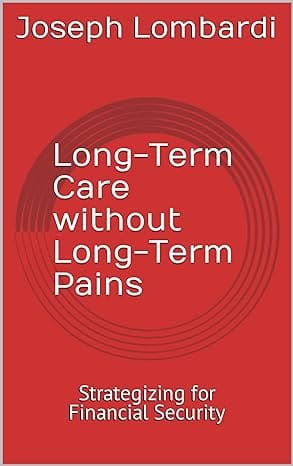Types of Dividend Options
To understand the dividend options available with your whole life insurance policy in Connecticut, you need to learn about the different types of dividend options. Cash Dividends, Premium Reduction and Paid-Up Additions are some of the solutions that will be discussed in this section.
Cash Dividends
Cash payments made by a company to its shareholders are called dividend payouts, which act as rewards for their investments. These can come in various forms, including cash dividends, stock dividends, property dividends and scrip dividends. Cash dividends are the most common type and refer to companies distributing their profits to shareholders through a direct payment of money.
For instance, companies may opt for cash dividends when they wish to retain earnings for future growth opportunities while still rewarding investors with regular income. Another reason for choosing cash dividends could be higher taxes on other types of payouts. Additionally, this type of dividend tends to attract more investors due to the immediate financial gain.
It’s worth noting that the amount paid out as cash dividends may vary between companies based on factors like market trends, financial performance and dividend policies. Moreover, some companies may choose to pay out special or one-time interim dividends alongside regular periodic ones.
Investors looking for reliable sources of income prefer investing in companies issuing consistent cash payouts regularly. Alternatively, those seeking growth potential may consider reinvesting these payments into the company’s shares or exploring alternative investment strategies. Ultimately, selecting the right dividend option depends on an investor’s personal finance goals and risk appetite.
Premium Reduction
One possible rephrased heading for ‘Premium Reduction’ could be ‘Discounted Cost’. This refers to a dividend option where a company offers its shareholders a reduced premium on their stocks in lieu of traditional cash payouts. Shareholders can select whether they want to reinvest that saved money in more stock or if they prefer to receive it as cash. This keeps the shareholder invested in the company while also offering some financial flexibility.
In addition, the discounted cost option may also come with tax benefits for the shareholder. By choosing to reinvest their premium reduction in additional shares instead of taking the cash payout, the shareholder can avoid paying taxes on those earnings until they choose to sell their shares.
It’s interesting to note that this type of dividend option has become increasingly popular among companies in recent years. Large tech companies like Amazon and Google have both offered shareholders discounted stock options as a way of maximizing long-term investment.
A good example of this is Apple Inc., who introduced its first discount stock program back in 2012. At the time, they offered a 2% discount on common stock prices for investors who chose to participate. The program was so successful that it was expanded by 10% just one year later. Today, Apple continues to offer this attractive incentive to its shareholders as part of their dividend program.
Paid-Up Additions
Adding Dividends – Unique technique to boost insurance policy values
- They involve using dividends to purchase additional insurance, which adds to the policy’s death benefit and cash value.
- Unlike traditional dividends, which can be paid out in cash, paid-up additions remain with the policy and continue to earn dividends themselves.
- Paid-Up Additions can be an effective way to supplement retirement income or offset premium payments for a policyholder.
- Policyholders have the freedom to choose the amount and frequency of their paid-up additions.
Did you know?
Paid-Up Additions work best when used in conjunction with participating policies. By doing this, policyholders not only reap the benefits of a higher payout but also enjoy simplified dividend payments.
An example of the advantage:
A client chose to use Paid-Up Additions while designing her life coverage plan. Years later, she faced serious health challenges that could exhaust her savings. However, thanks to the increased cash-value cushion supported by paid-up additions earning numerous dividends over time, she didn’t need to stop paying premiums and was able to keep her vital coverage intact.
Income Tax Considerations
To fully understand the income tax considerations related to whole life insurance dividend options in CT, it’s important to explore the taxation of dividends and surrenders, as well as tax-free loans. These sub-sections offer differing solutions to handling the tax implications of whole life insurance dividends and surrendering the policy, as well as options for taking out loans without incurring additional taxable income.
Taxation of Dividends and Surrenders
When it comes to considering income tax implications, it is essential to take into account the taxation of profits and disbursements that businesses make. These can be tricky to navigate, so it’s important to understand how dividends and surrenders are taxed.
Below is a table that outlines the taxation of dividends and surrenders.
| Disbursement Type | Taxation |
|---|---|
| Dividend | Taxed at a lower rate than personal income |
| Surrender | Generally taxed as ordinary income |
It’s worth noting that there may be exceptions or additional details depending on the specific business structure and circumstances. It’s crucial to consult with a tax expert or accountant for accurate information.
When considering the taxation of profits and disbursements, it’s also essential to keep records well-organized throughout the year. This includes keeping track of all expenses, revenue, and any transactions related to dividends or surrenders.
To avoid complications during tax season, it’s also recommended to file taxes on time and stay up-to-date with any changes in tax laws that may affect your business.
In summary, understanding the taxation of dividends and surrenders is crucial for businesses’ financial planning. By keeping accurate records throughout the year and seeking professional advice when necessary, businesses can navigate these complexities efficiently.
Tax-free Loans
Loans procured without any tax implication are a considerable method of reducing one’s taxable income. Referred to as Tax-exempt Loans, these loans allow borrowers to repay them without having to pay taxes on the loaned out amount. The IRS has imposed certain restrictions on these types of loans, including that it must be signed in writing and include interest rates determined at the Federal level.
In addition to avoiding immediate taxes on these borrowed funds, they also provide low-interest-rate opportunities for investors looking for ways to maximize their investment profits. Additionally, individuals may also use this avenue for borrowing funds for long term investments or discretionary spending while avoiding recurring taxes.
Creating a trust-fund allows you to draft lenders’ terms and conditions of tax-free loan offerings so beneficiaries will not face taxation when disbursing from their trust fund balance in future years.
Many successful Americans have leveraged a variety of these guilt-free financing methods over time by discretely utilizing direct loans using personal wealth from business sales transactions.
Using Dividends to Purchase Paid-Up Additions
To maximize the benefits of a whole life insurance policy in Connecticut, one can consider using dividends to purchase paid-up additions. These additions increase the death benefit and cash value without increasing premium payments.
The following table illustrates how dividends can be used to purchase paid-up additions:
| Year | Dividend Amount | Cost of Paid-Up Addition | Increase in Death Benefit |
|---|---|---|---|
| 1 | $500 | $450 | $10,000 |
| 2 | $550 | $460 | $12,000 |
| 3 | $600 | $475 | $13,000 |
It is essential to note that dividend amounts and costs for paid-up additions can vary based on insurance company performance. Policyholders should speak with their insurer or agent for specific details.
By using dividends to purchase paid-up additions, policyholders can accumulate more significant cash value over time and increase their death benefit without additional out-of-pocket expenses. This approach may be especially beneficial for those who want to ensure their beneficiaries’ financial security.
Suppose you choose this option. In that case, it is recommended that you re-evaluate your policy annually to ensure that it aligns with your long-term goals and adjusts your dividend options accordingly to maximize benefits.
Considerations for Connecticut Residents
To understand the considerations for Connecticut residents when it comes to whole life insurance dividend options, delve into the state taxes and regulations, in comparison to other investment options.
State Taxes and Regulations
Connecticut has a comprehensive tax system that affects both individuals and businesses. Various state taxes and regulations must be considered by residents to avoid noncompliance with the law. Along with taxes, there are also essential regulations regarding employment, zoning, and federal environmental protection laws.
It is imperative for Connecticut residents to understand their tax obligations. For individuals, income tax is based on progressive rates and can vary based on marital status, earning capacity, deductions, and exemptions. At the same time, business owners are required to pay certain taxes such as sales tax or corporate income tax based on their gross receipts or net profits.
Apart from taxes, the state government has enacted several regulations affecting different areas of life in Connecticut. They include wage and salary requirements for employees, zoning policies for property development or land use changes, consumer protection laws against anti-competitive practices by businesses operating in the state.
In brief, Connecticut residents should familiarize themselves with tax laws to ensure they remain compliant with all legal requirements set forth by state government agencies. Neglecting this responsibility could lead to costly fines and penalties for those who could not follow these laws precisely.
Suppose you are a new resident in Connecticut; understanding these regulations may seem daunting at first but taking a proactive approach will ensure you don’t miss any important deadlines or incur unwanted costs. To make sure that your finances remain healthy over the years you reside here in Connecticut, conduct thorough research or seek advice from a licensed professional before making decisions about your financial matters.
Comparison to Other Investment Options
Investment Options Compared
A comparison between investment options can assist Connecticut residents in choosing the most profitable investment. The table given below provides a detailed comparison of various investment options, including pre-tax annual return rates, minimum investment amounts, and tax implications.
| Investment Option | Pre-Tax Annual Return Rate | Minimum Investment Amount | Tax Implications |
|---|---|---|---|
| Savings account | 0.05% | $10 | Taxable on interest earned |
| Mutual funds | 5-15% | $500-$1,000 | Capital gains taxed annually (long-term gains are lower) |
It is vital to note that investing always carries risks. Before investing, it is critical to assess individual risk tolerance and conduct research.
If someone is unsure about where to invest their money, consulting with a financial advisor could be beneficial.
Pro Tip: Diversify your investments across multiple options to mitigate risks and maximize returns.
Conclusion
As we explore whole life insurance dividend options in CT, it’s important to note the various benefits and considerations before selecting an option. Understanding the dividend selection process and how it affects your policy is crucial.
In addition, it’s essential to consider the tax implications of dividends, the stability of the insurance company, and one’s overall financial goals when selecting a dividend option. We must choose a payout option that aligns with our long-term financial plans.
One interesting aspect to note is that some insurance companies offer bonus or loyalty rewards on top of regular dividends if you’ve held onto your policy for an extended period.
A customer once shared his story about selecting a dividend payout option that ultimately helped him pay for his children’s college education. By making informed decisions early on in his policy, he was able to reap the benefits of his whole life insurance plan and secure his children’s future without any financial burden.
Frequently Asked Questions
1. What are dividend options for whole life insurance in CT?
Dividend options for whole life insurance in CT include cash payment, paid-up additions, premium reduction, and accumulation at interest. The policyholder can choose one or a combination of these options.
2. What is a cash payment option?
The cash payment option allows the policyholder to receive the dividend as a lump sum payment. This can be used for any purpose, such as paying bills or investing.
3. What is a paid-up additions option?
The paid-up additions option allows the policyholder to use the dividend to purchase additional coverage without having to pay any new premiums. This increases the death benefit and cash value of the policy.
4. What is a premium reduction option?
The premium reduction option allows the policyholder to use the dividend to reduce the amount of the premium due. This can be a good option if the policyholder wants to keep the same coverage but reduce the amount of premium paid.
5. What is accumulation at interest option?
The accumulation at interest option allows the policyholder to leave the dividend with the insurance company to accumulate interest. This can be a good option for those who do not need immediate access to the funds and want to grow their cash value over time.
6. Can I change my dividend option?
Yes, most insurance policies allow the policyholder to change their dividend option at any time. However, it is important to understand the terms and conditions of the policy before making any changes.



